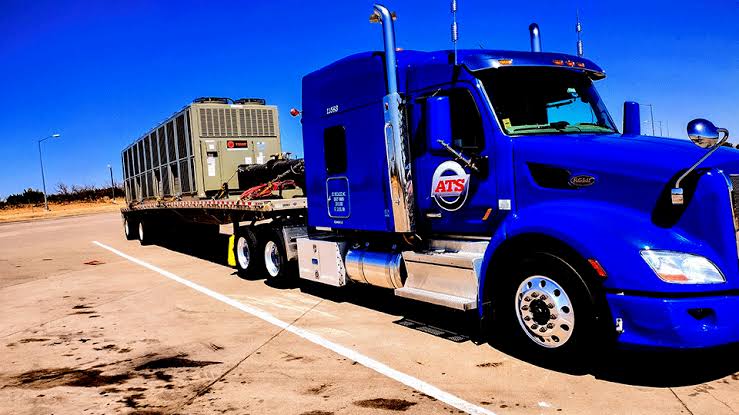Flatbed trucking is a key component of the transportation industry, providing unmatched versatility in transporting large, heavy, or oddly shaped loads. Unlike enclosed trailers, flatbeds allow cargo to be loaded and unloaded from the sides, top, or back, making them a preferred choice for various industries, including construction, agriculture, and manufacturing. Whether you’re new to the field or looking to understand its intricacies, this guide will walk you through the essentials of flatbed trucking.
What is Flatbed Trucking?
Flatbed trucking refers to the use of flat trailers without roof or walls for hauling freight. This design enables the transportation of oversized and irregularly shaped goods that cannot fit in standard enclosed trailers. Common loads include construction equipment, steel beams, lumber, concrete pipes, and machinery. Due to the open nature of flatbeds, freight needs to be securely strapped, tarped, or covered for safety and protection from the elements.
Flatbed trucking is not just about moving goods; it’s a specialized service requiring skilled drivers who can handle complex cargo-loading techniques and abide by safety regulations.
Advantages of Flatbed Trucking
Flatbed trucking has several advantages that make it an indispensable part of logistics and supply chain networks.
- Flexibility for Diverse Loads
Flatbeds can accommodate cargo of varying dimensions, including oversized items. Loading and unloading are easier since there are no walls or roof to restrict movement.
- Efficiency in Loading and Unloading
Unlike traditional trailers, flatbeds allow for faster loading and unloading due to access from multiple sides, saving time on busy schedules.
- Support for Oversized Freight
With specially designed trailers, flatbeds can manage heavy or wide freight exceeding standard height and width limits, such as large industrial equipment.
Common Industries That Depend on Flatbed Trucking
Many industries rely heavily on flatbed trucking to keep their operations running smoothly. Here are some of the most common sectors that use this form of transportation.
Construction Industry
The construction industry frequently transports heavy machinery, steel beams, concrete blocks, and lumber using flatbed trucks. These trucks are ideal due to their ability to hold oversized and heavy loads securely.
Agricultural Sector
Farmers and suppliers use flatbed trucks to transport machinery, hay bales, and other farming equipment across long distances, ensuring timely delivery during busy seasons.
Manufacturing and Logistics
Raw materials like metal pipes, coils, and heavy machinery are moved efficiently using flatbed trucks. Their capacity to handle high-weight goods makes them a go-to choice for manufacturing facilities.
Safety Tips for Flatbed Trucking
Driver and cargo safety are crucial in flatbed trucking. Mishaps can be costly and hazardous. Below are a few safety tips to consider.
- Secure the Cargo Properly
Use straps, chains, or tarps to secure the freight tightly. Even a minor shift in cargo during transit can cause an accident.
- Conduct Regular Inspections
Drivers should routinely inspect the flatbed, straps, and load before, during, and after the trip to ensure everything stays securely in place.
- Compliance with DOT Guidelines
Flatbed truckers need to strictly follow Department of Transportation (DOT) regulations concerning weight limits and load inspections to minimize risks.
Challenges in Flatbed Trucking
Flatbed trucking comes with a unique set of challenges that both trucking companies and drivers need to address.
Weather Conditions
Since the load is exposed to the elements, adverse weather like rain, snow, or wind can impact the safety and condition of the cargo. Proper tarping is critical in such situations.
Driver Expertise
Flatbed truck drivers require specialized skills, experience, and training to handle complex loads and ensure safe delivery. This may involve using machinery to load and unload heavy freight.
Maintenance of Equipment
Flatbed trucking also includes ensuring that equipment like tie-down straps, tarps, and the flatbed itself is in optimal condition. Poor maintenance can risk the load’s safety.
How to Get Started with Flatbed Trucking
If you’re interested in entering the world of flatbed trucking, here’s how you can begin.
- Obtain Proper Licensing
You will need a commercial driver’s license (CDL) and specialized endorsements relevant to flatbed operations.
- Gain Experience
It’s advisable to gain experience driving and handling different types of freight before transitioning into flatbed trucking.
- Work with Specialized Employers
Seek companies that provide training for flatbed trucking. Many companies also offer mentorship programs that help new drivers adapt to its challenges.
Why Flatbed Trucking is Essential in Today’s Economy
Flatbed trucking plays a pivotal role in keeping industries running. By enabling the movement of heavy-duty and oversized goods, flatbeds ensure supply chains remain uninterrupted. Whether it’s building infrastructure or transporting farm equipment, flatbeds provide a dependable solution for unique logistical challenges.
Final Thoughts
Flatbed trucking is a versatile and crucial component of the transportation industry. From carrying oversized freight to meeting the unique needs of various industries, flatbeds offer unmatched flexibility and efficiency. While it comes with its challenges like weather conditions and specialized skill requirements, flatbed trucking remains an essential part of today’s global economy. For those considering a career or service in this niche, it presents both rewarding opportunities and a chance to be a vital link in the supply chain.
















